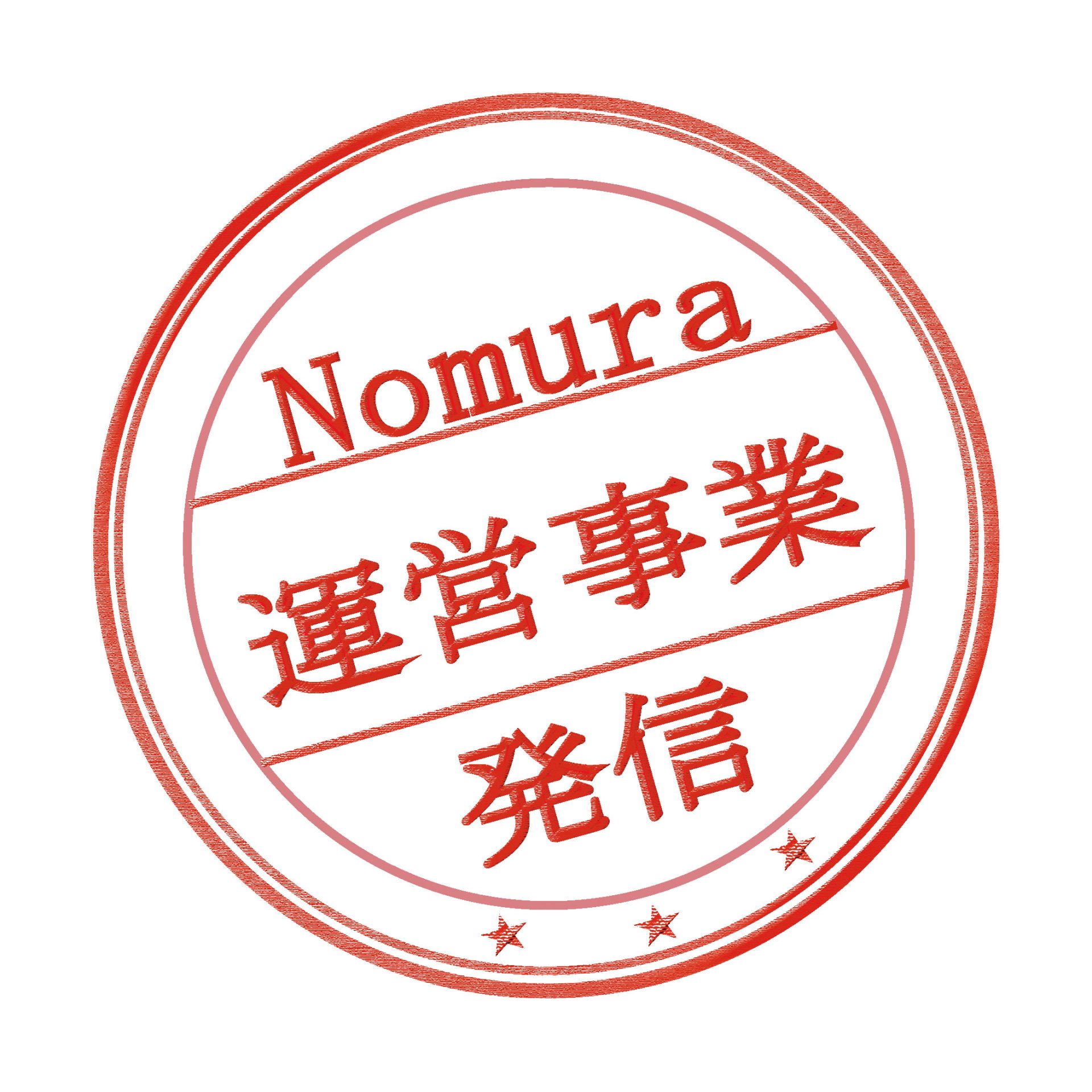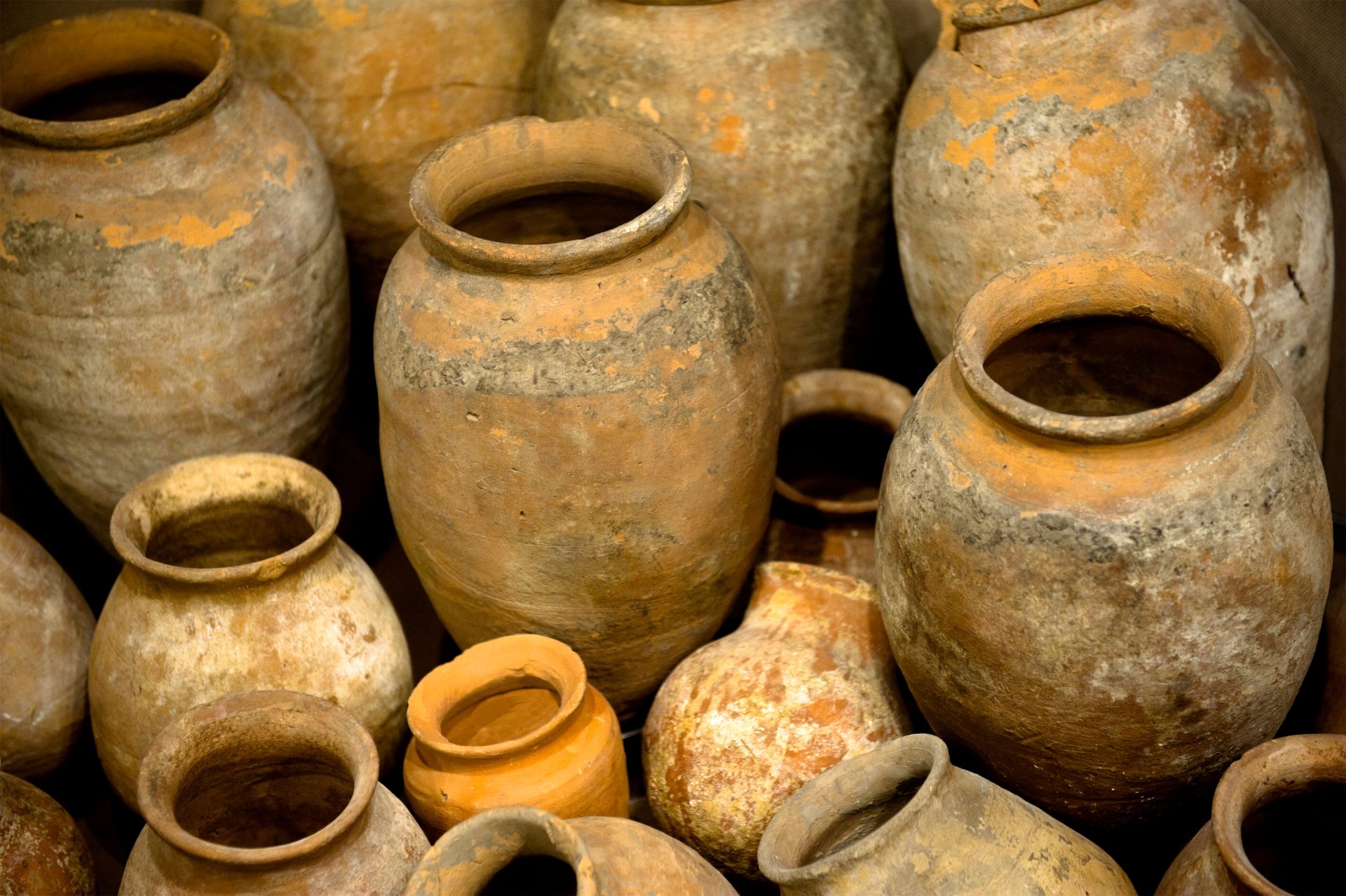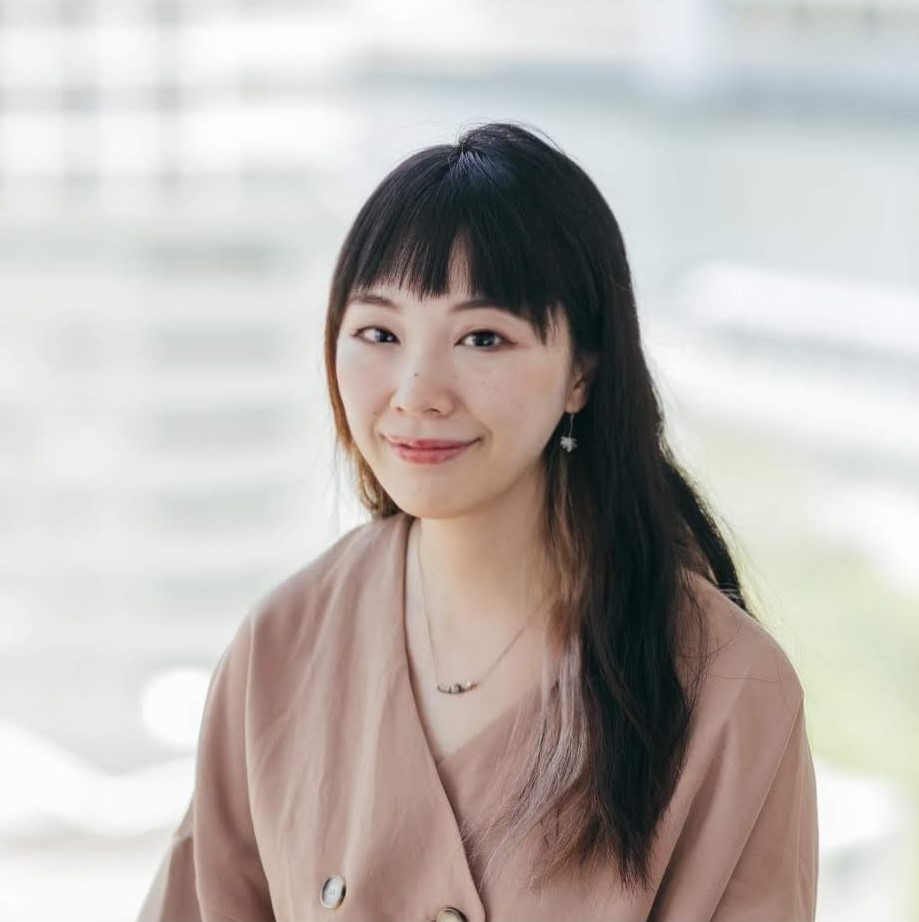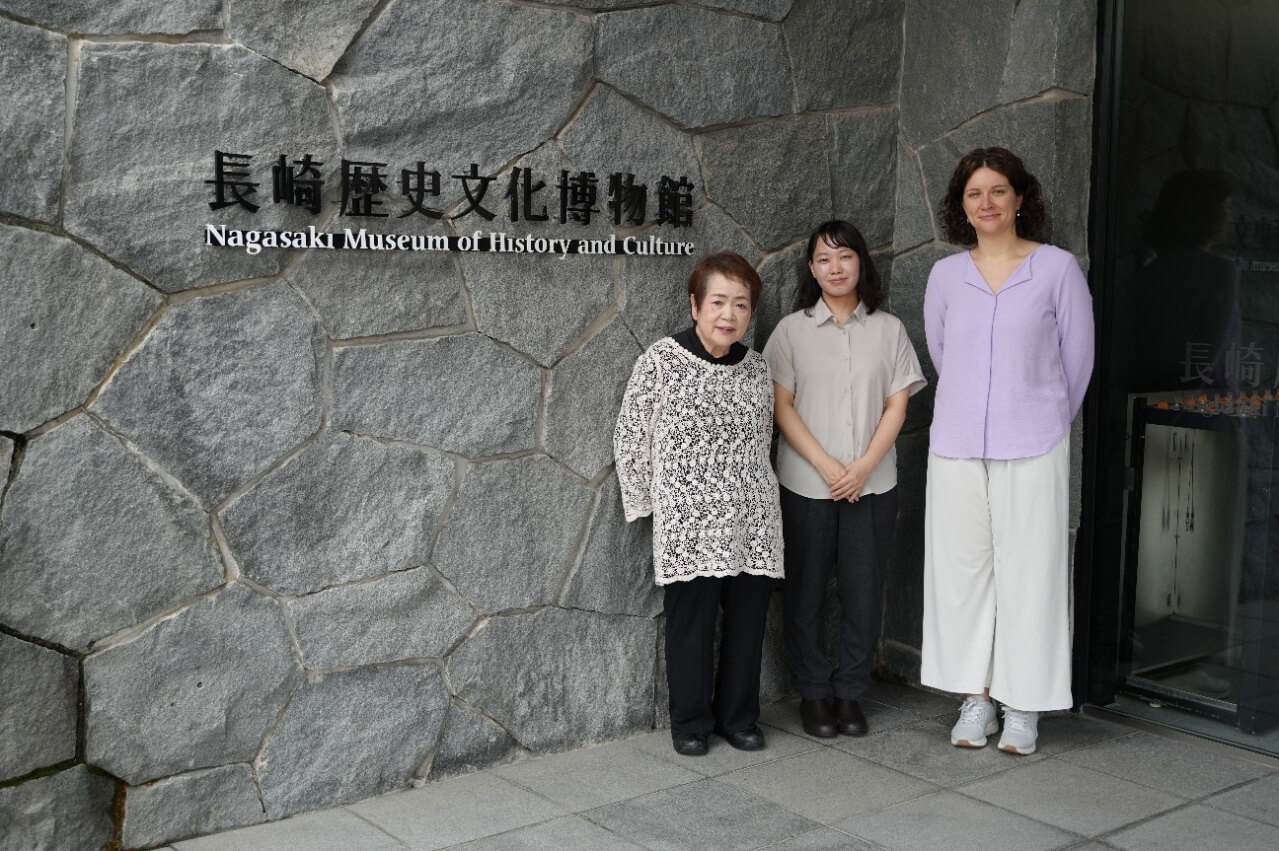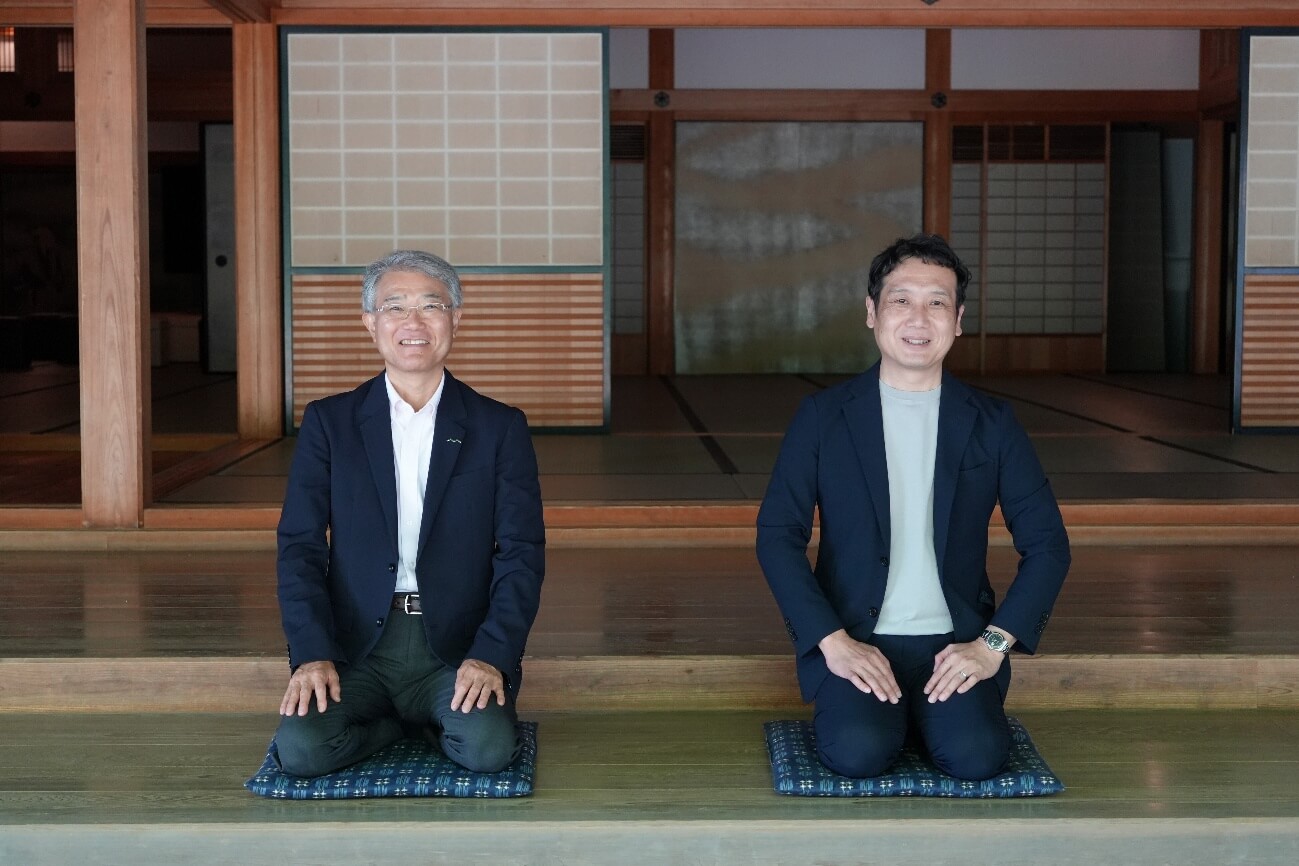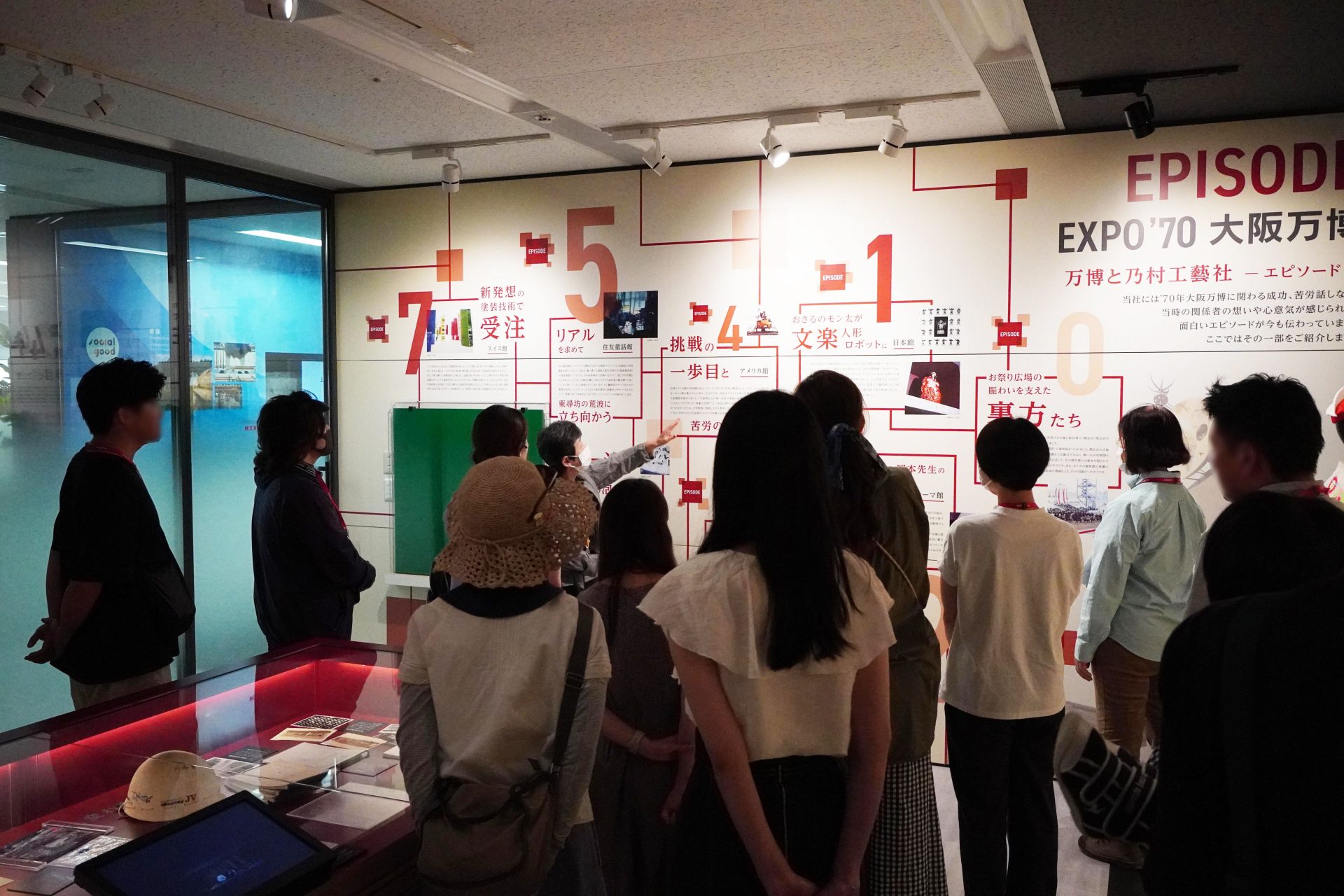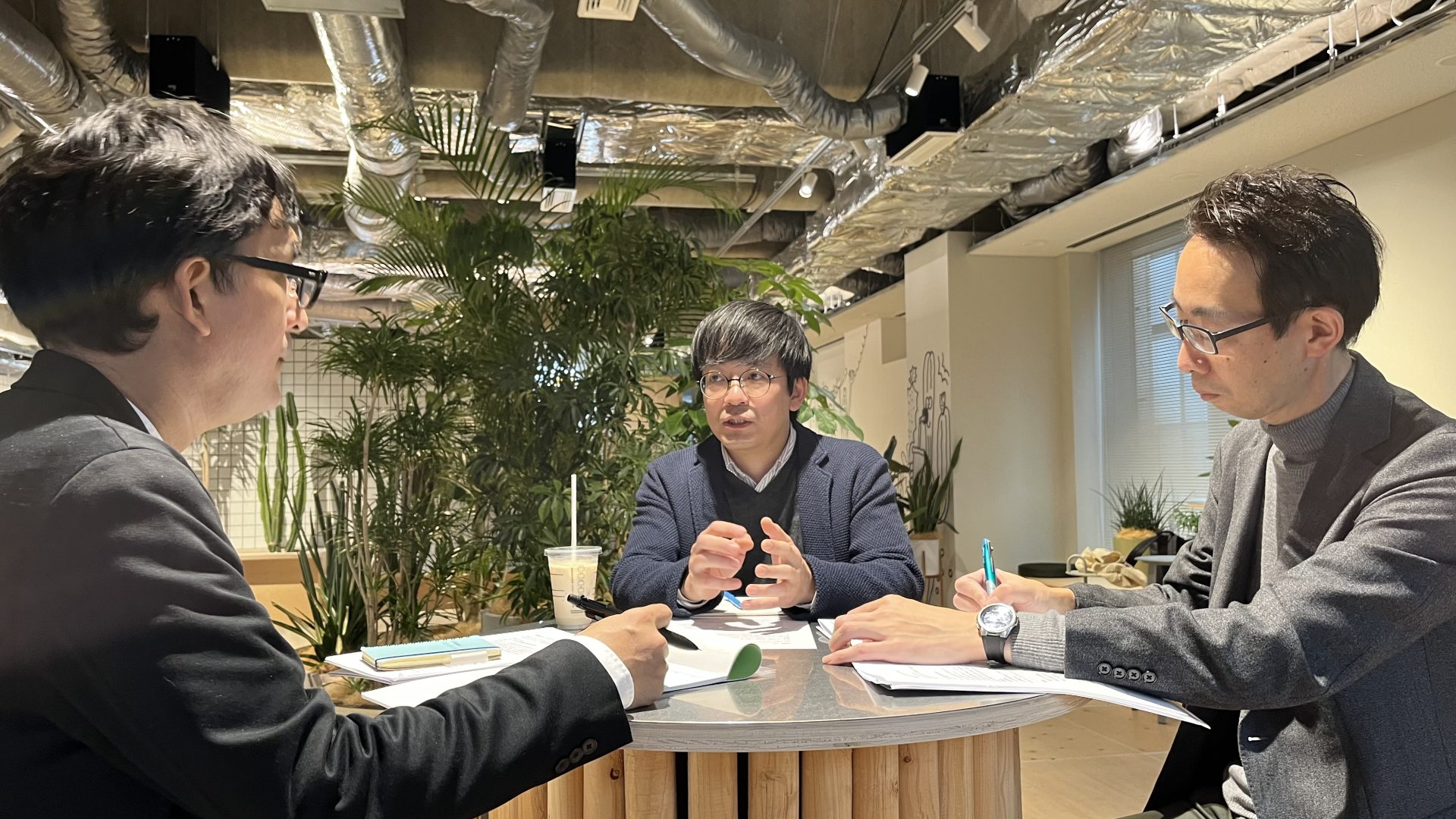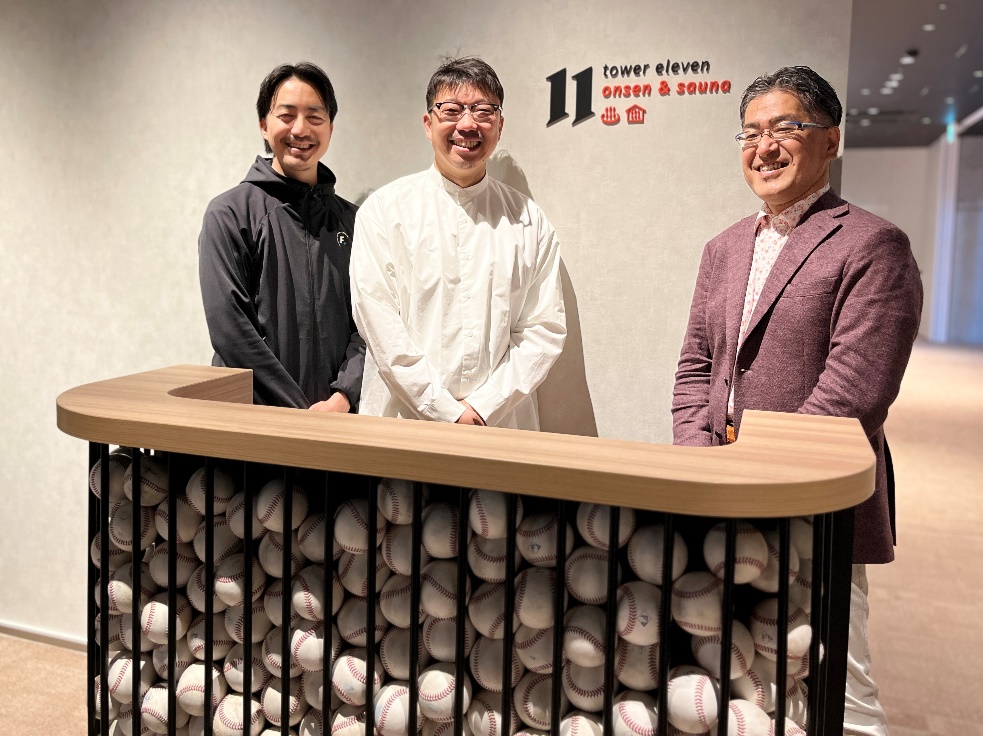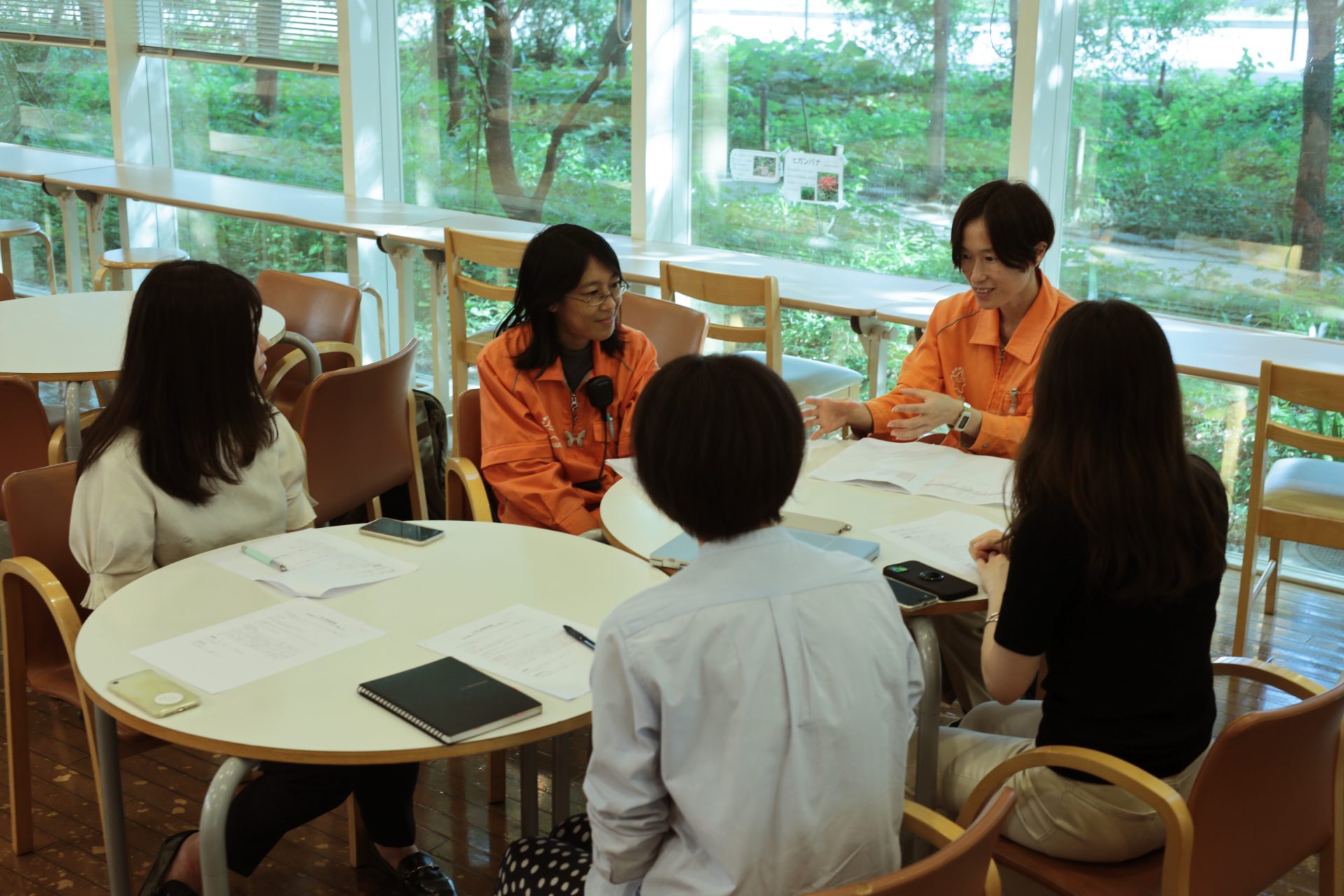
- text and edit by
- 乃村工藝社 施設運営事業
乃村工藝社グループは総合空間プロデュース企業として、空間の設計・施工だけでなく、開業後の施設の運営も手掛けています。博物館、科学館、美術館などの文化施設を中心として、調査研究・学芸部門を含む、施設全体の総合的・包括的な運営管理を行っています。事業を推進する私たち、ビジネスプロデュース本部 公民連携プロジェクト開発1部 運営事業課では、全国の17施設で約250名の社員が活躍し、本社社員がバックオフィスとしてサポートしています。各施設ではチームが一体となり、その地域に根ざし、そして愛される施設の価値づくりを行っています。
それぞれの施設には、季節や時機に応じた企画展を企画・実施する、さまざまな専門知識を持ったスタッフが所属しています。数か月ごとに変わる展示テーマをどのような想いで企画し、来館者の皆さんに伝える工夫をどのようにしているのか、その独自の視点を切り取るインタビュー記事「企画展のつくり方」をシリーズ化します。
第1弾は多摩六都科学館にて7月20日(土)から開催される『開館30周年夏の特別企画展 ロクト昆虫図鑑』 。企画を担当したスタッフのおふたりに、展示の見どころや展示を通して情報を伝える側としての想い、日々展示に携わる上で意識していることなどを運営事業課のメンバーがインタビュー、ノムログ編集部がその様子を取材しました。

【企画展担当スタッフ】
多摩六都科学館
北村 沙知子さん(写真中央)
大学では水産を専攻。約20年間多摩六都科学館で展示及びプログラム担当スタッフとして勤務。現在自然グループにて企画展、プログラムの企画・運営を行う。担当した企画展やプログラムのテーマ:魚/魚の口/地域の川/羊毛及び繊維/魚の回遊×すごろく/魚の分類/浮沈子工作/イカの解剖、と生き物を中心とした幅広いテーマの実績がある。
木下 佐和子さん(写真左から2番目)
大学では植物生態学を専攻。指定管理者制度開始前の業務委託時代から多摩六都科学館に勤める。勤続約15年。現在はインタープリターグループに所属し、主に展示室の解説・案内を担当。館庭の自然を紹介するロクトの庭だよりを発信。
今回のロクト昆虫図鑑展では企画だけでなく、関連する参加型イベントとして実施予定の子供たちと館庭で昆虫を探すアクティビティ「昆虫調査」を担当。
【インタビュアー】
株式会社乃村工藝社
ビジネスプロデュース本部 第一統括部 公民連携プロジェクト開発1部 運営事業課
森 美樹(写真左)プランニングディレクター
日野 夏香(写真右から2番目)
青木 莉沙(写真右)
*文:横田 智子(ノムログ編集部)
*撮影:鈴木 信太朗(ノムログ編集部)
人が主体。多摩六都科学館 企画展担当スタッフと巡るミニツアー
多摩六都科学館(以下、ロクト)は、1994年に開館、2013年にリニューアルを行いました。展示設計者であり、指定管理者である乃村工藝社が、現場に立つ科学館スタッフの意見を取り入れながらつくり上げた施設です。スタッフとのコミュニケーションでより科学の学びを深化させられる体験スペース「ラボ」、地域の人材・企業・学術機関と連携した情報発信スペース「つながるスポット」、世代間交流を育む「キッズスペース」の3つが新設され、「ひとが主体」「成長し変化し続ける」がテーマとなっています。
インタビューの前に、展示の見どころとなる標本や子供たちと一緒に昆虫探しを行う「昆虫調査」の舞台となる館庭を一緒に巡りながら、北村さん、木下さんのお話を伺いました。
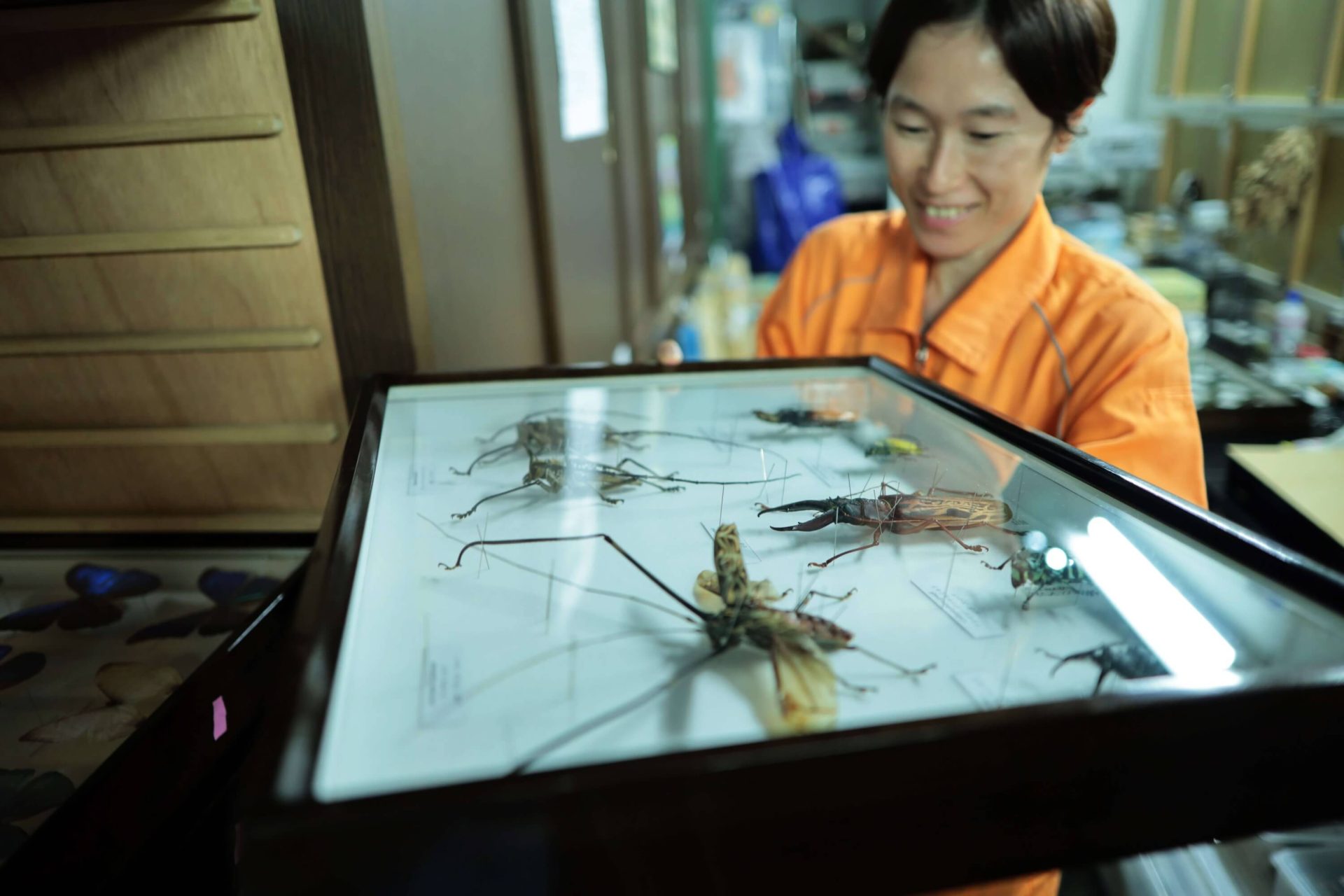
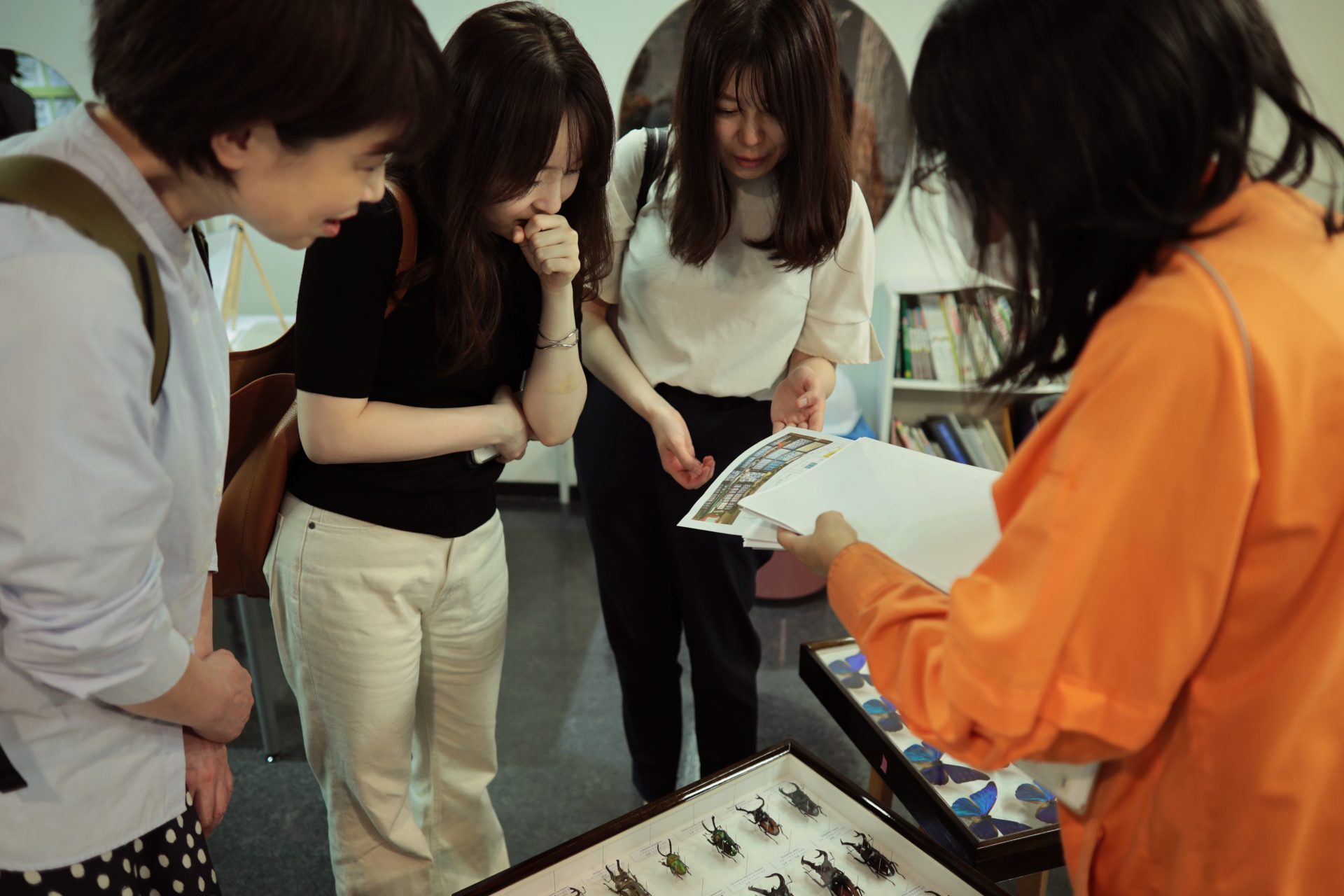
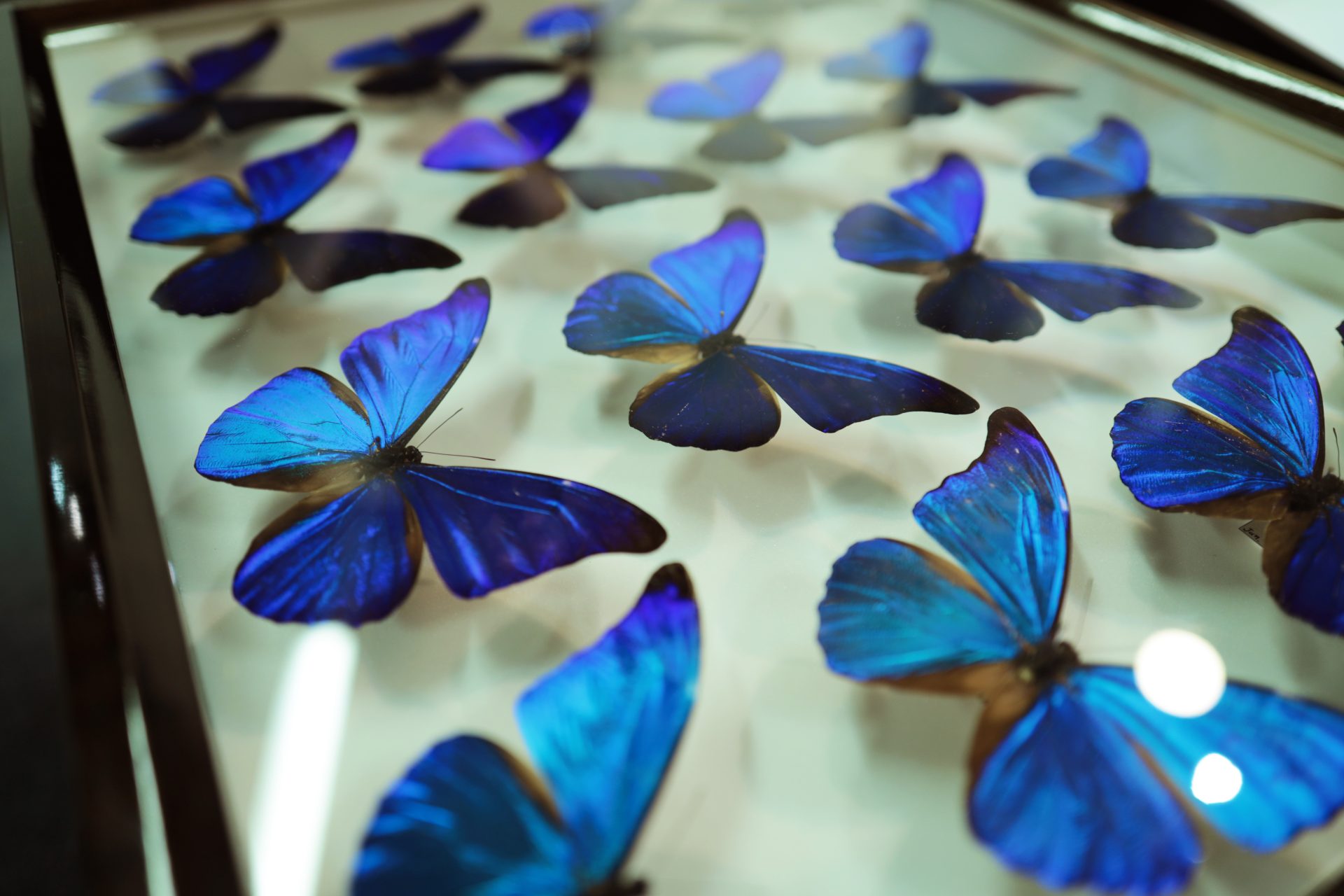
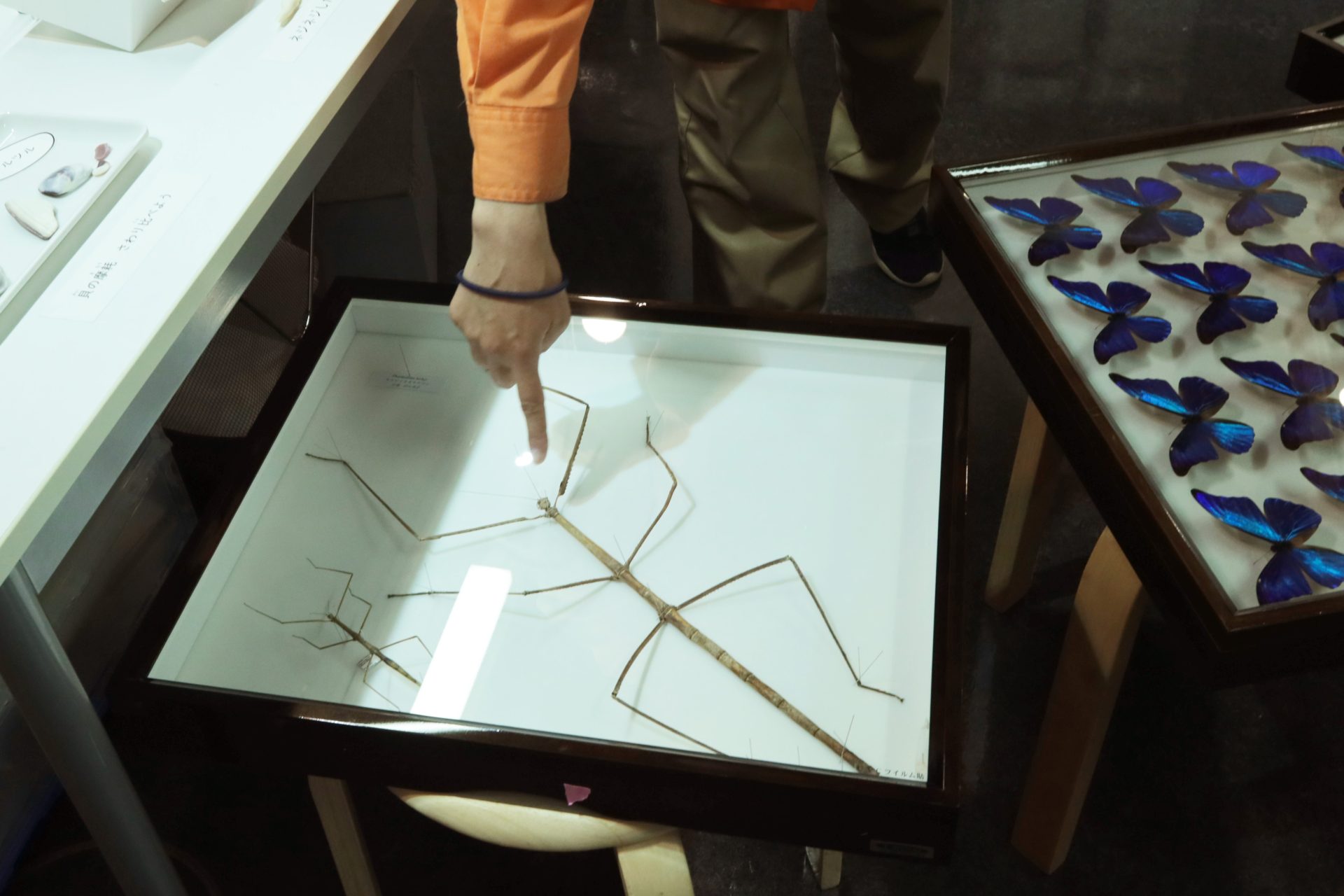
「今回の目玉となる標本をお見せします」と貴重な標本コレクションを慎重に出して下さった北村さん。モルフォチョウの美しさに見とれる一同。
さらに木下さんが「ナナフシの前足の付け根が細くなっているのは、枝に擬態するために足を真っすぐ伸ばした時に、頭がすっぽり収納できるようになっているのです」と説明して下さり、「おお~」と自然のフシギに感動。
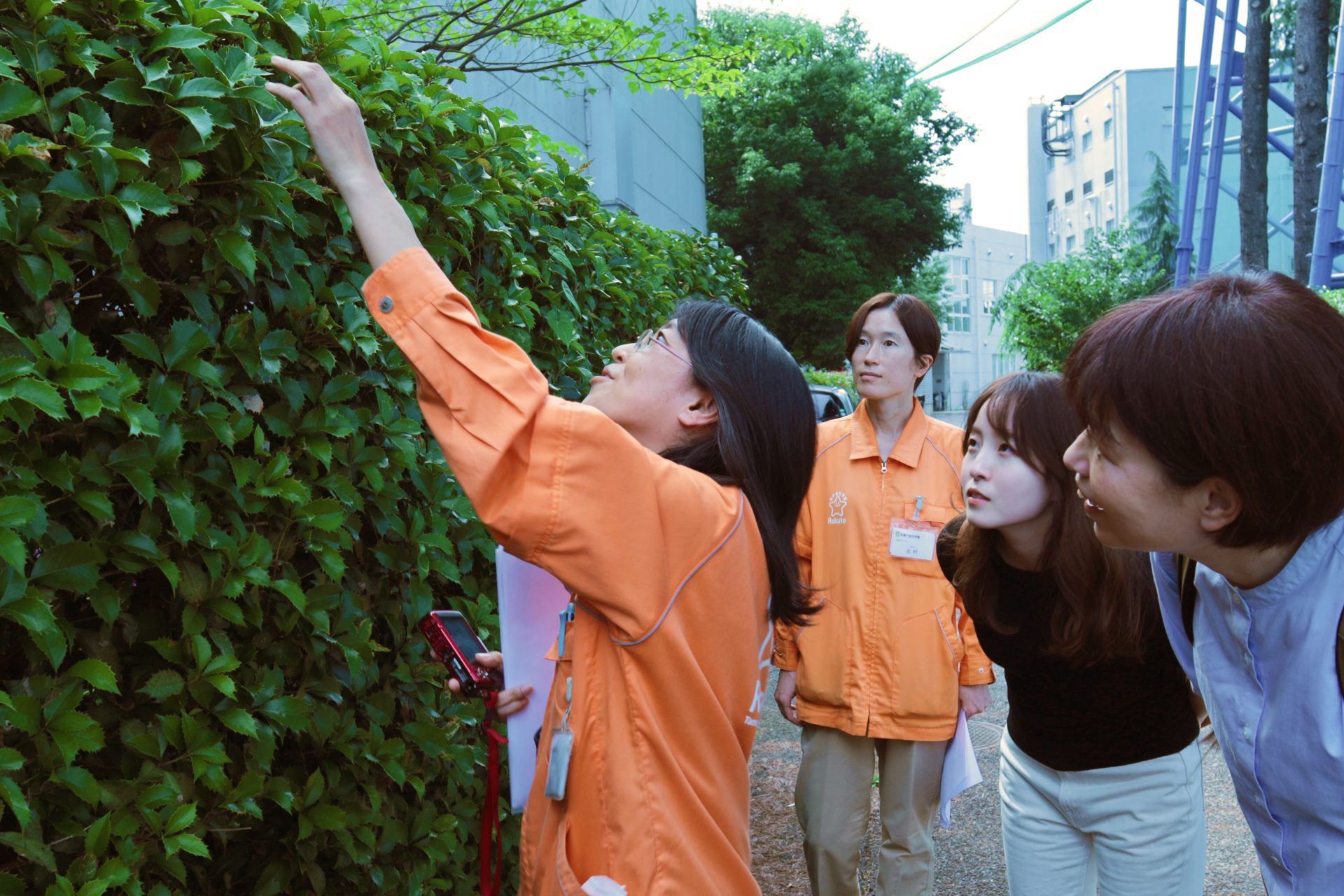
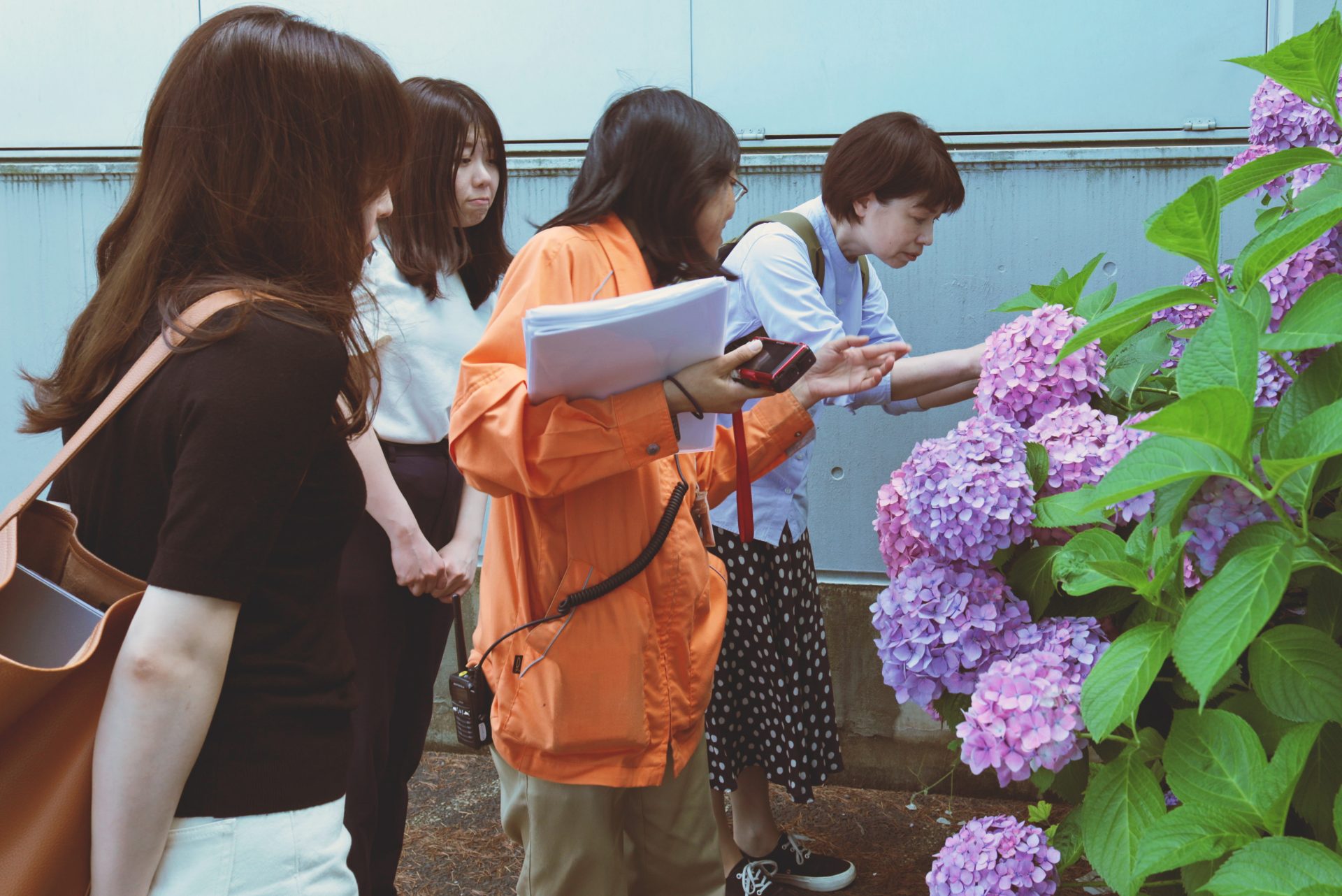
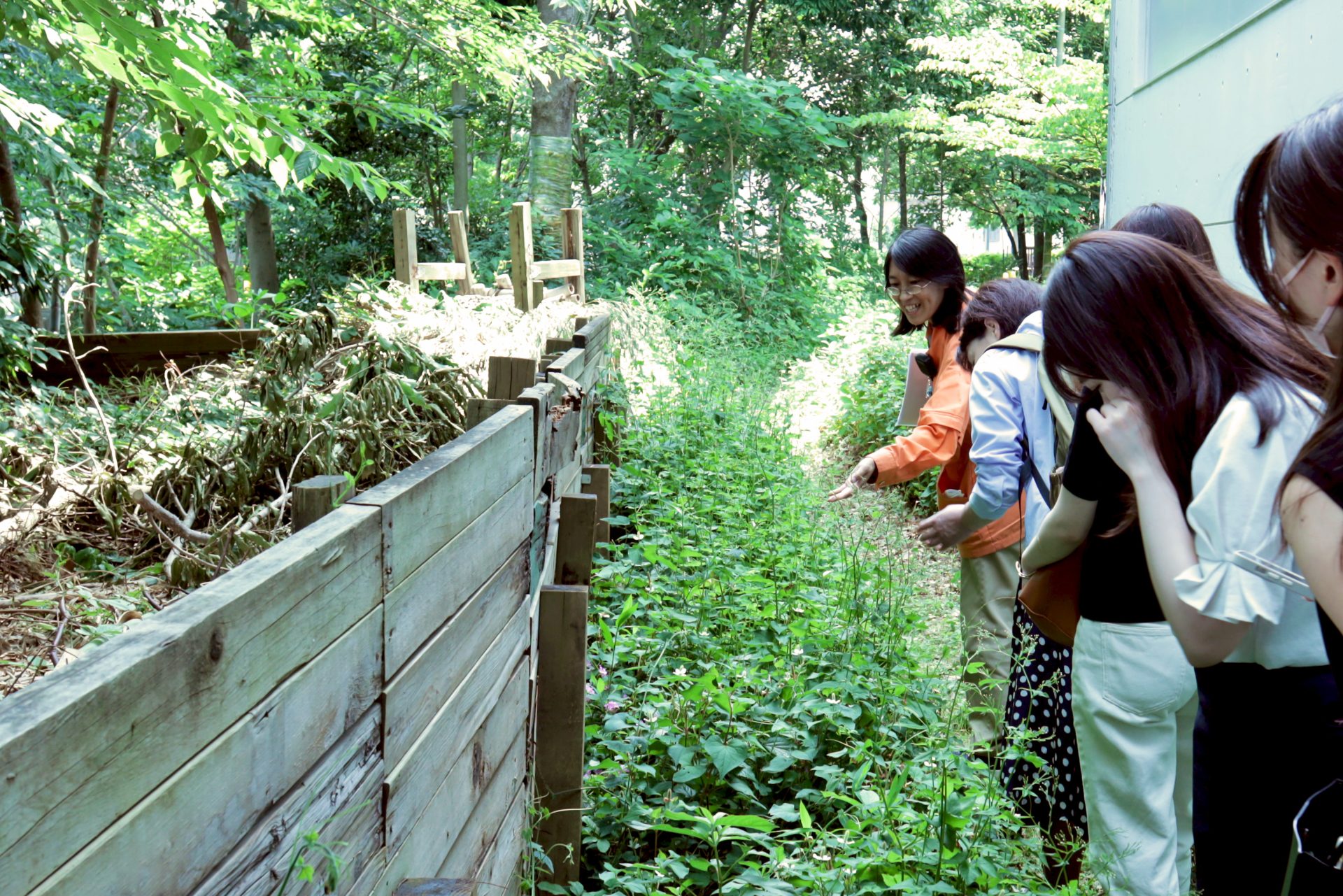
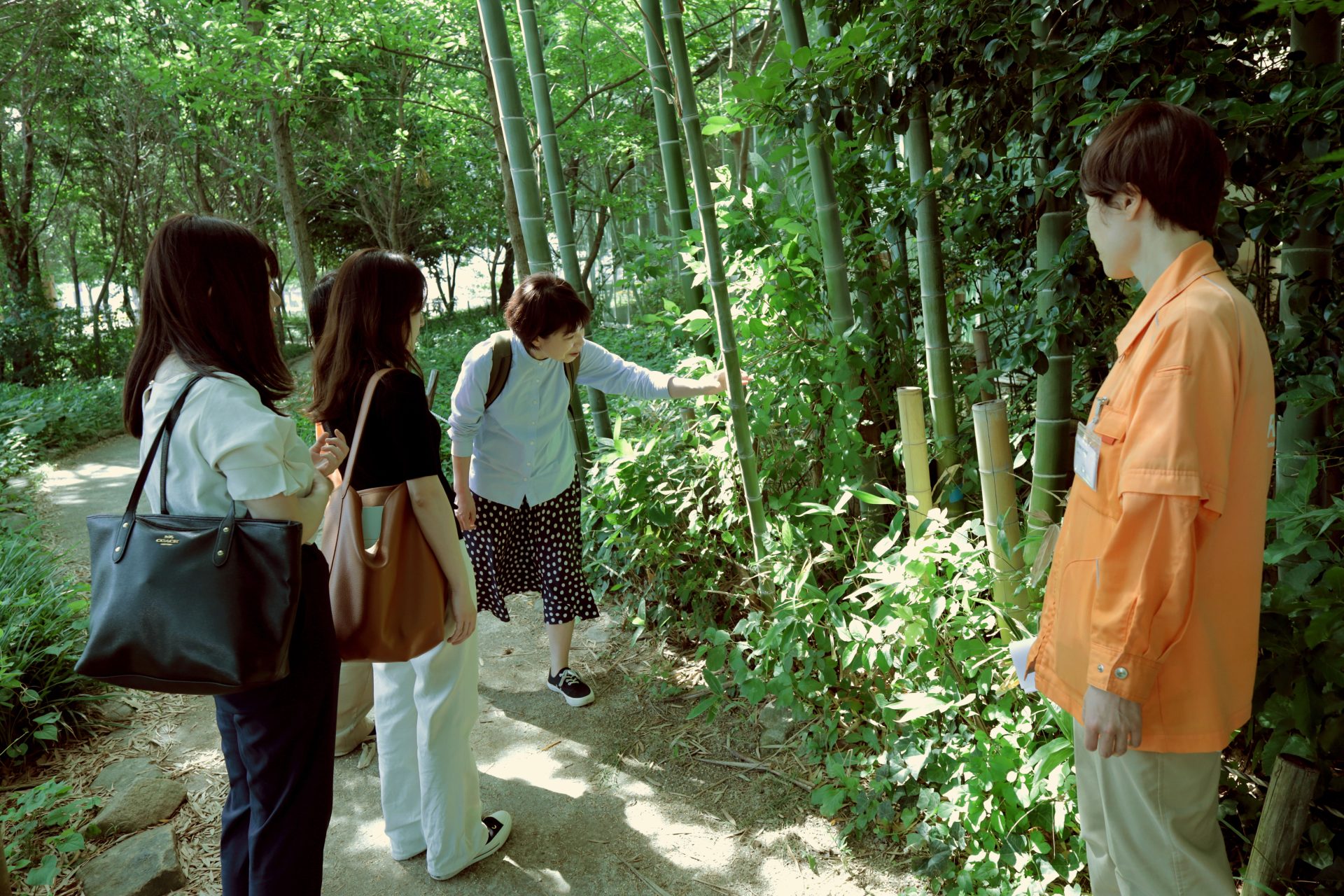
緑豊かな館庭を歩き始めると、早速「ヘリグロテントウノミハムシがいますね」と足を止める木下さん。「ピンと飛ぶんですよ」と説明した途端に、ピンと飛んだ姿を見て歓声を上げる一同。「縁の部分=ヘリが黒くて、テントウムシに似たノミのように跳ねる葉虫、なので“ヘリグロテントウノミハムシ”と呼ばれています」とすぐに名前の由来まで。
「葉っぱをじっくり観察したり、土にある石を少しどかしてみると、何かがガサッと動いて生き物を見つけることができます」と生き物探しのヒントを教えていただき、立派なアジサイ、珍しいミツバの花、若いフカフカの産毛が生えた竹など、植物の説明も。「今朝はイトトンボが飛んでいましたが、今はどこかに行ってしまったかな…?」と毎日の庭観察を欠かさない木下さんから、生き物への深い愛情を感じます。
5年ぶりの開催、『ロクト昆虫図鑑』を深掘り!
場所を館内の休憩スペースに移し、今回の企画展についてお話を伺いました。
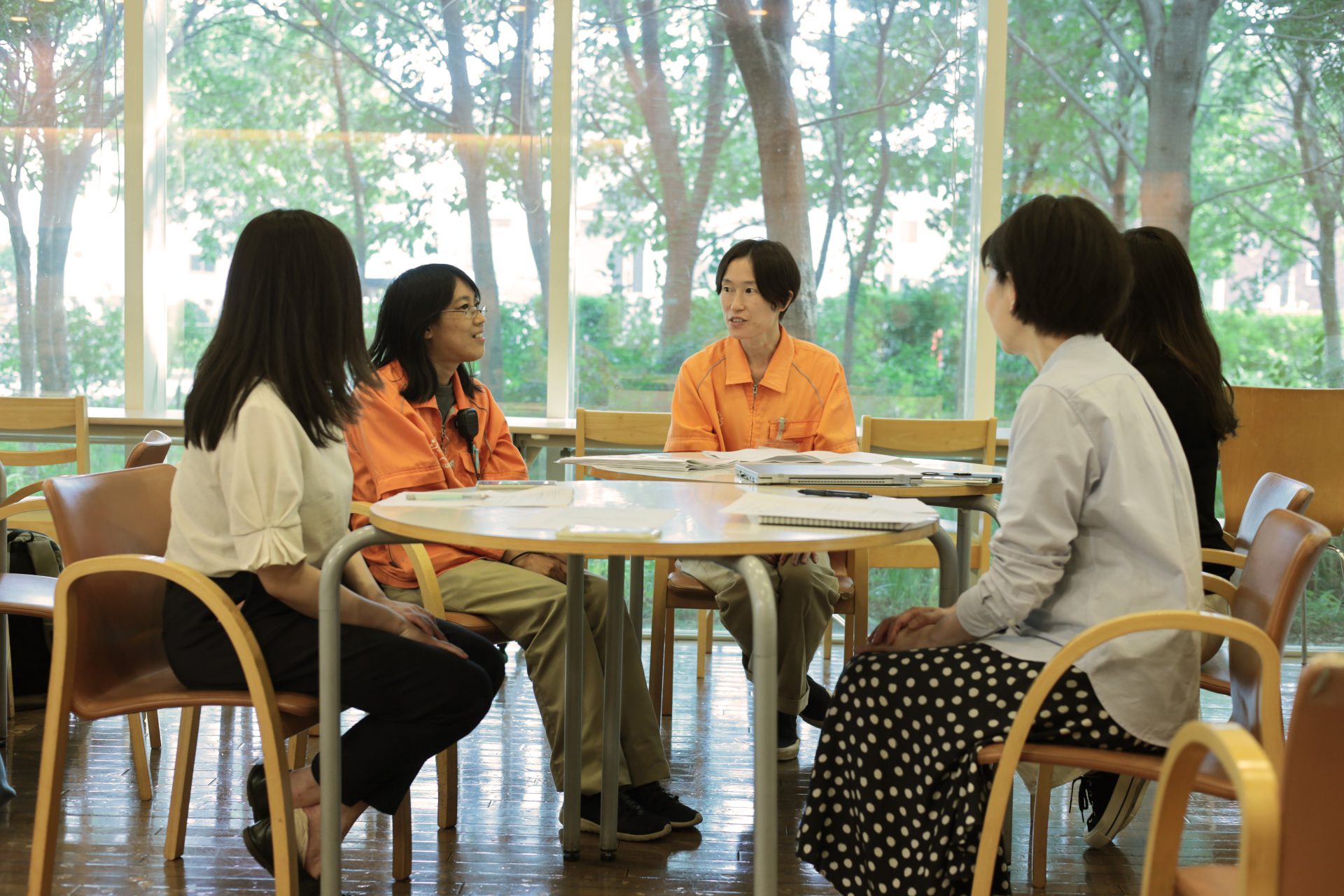
森
ロクトの「昆虫展」と言えば、2013、2016、2019と3年に1回のペースで実施してきて、毎回たくさんの方にお越しいただいている人気の展示です。今回、5年ぶりの開催となりますね。
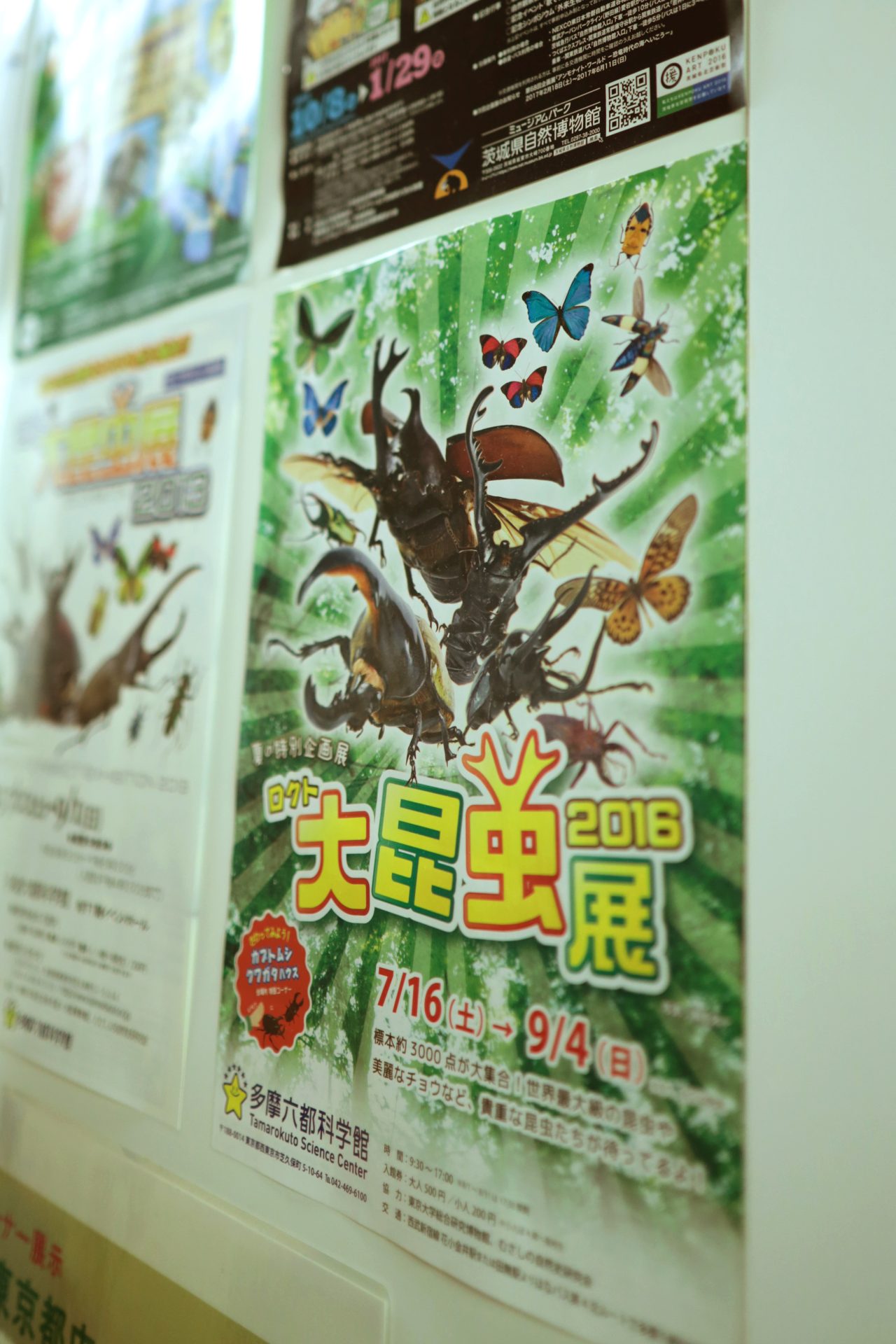

過去の展覧会ポスター
北村さん
はい、ロクトの30周年に合わせて企画したものです。
森
今回の展示の目玉はズバリ何でしょうか?
北村さん
木下さんと一緒に計画したのですが、たくさんのキレイな標本を見るだけではなく、「昆虫のすごい所を知ってもらいたい、知っているようで知らないことを知識として持ち帰ってもらいたい」という想いから、30周年にかけて“30個の昆虫の秘密”を展示することにしました。それが大きなひとつの目玉だと思っています。
森
数ある昆虫の中で、30個に絞るのは大変ではなかったですか?
木下さん
そうですね、監修の須田研司先生(子どもたちの自然体験活動等を行っている「むさしの自然史研究会」の代表。
ロクトの昆虫標本の監修、魚の剥製の補修などの協力者)からも「30個しかないと思われるのはちょっと…」というお話もありました。ですが、区切りがないとキリがないので30周年の数字に合わせた形です。もちろん「30個だけじゃないよ」というところまで伝わるといいな、と思っています。それから今回の目玉と言えば、オリジナルで制作する“系統樹”でしょうか。
北村さん
長さ4mほどの巨大なものを鋭意制作中です。(インタビュー日は開催準備中の6月11日)一般的に系統樹の中の昆虫はイラストや画像で表現されるものが多いと思いますが、できるだけ本物に触れて欲しいという想いから、標本を系統樹に組み込む形にしました。皆さんに感心してもらえるようなものを頑張ってつくりたいです。
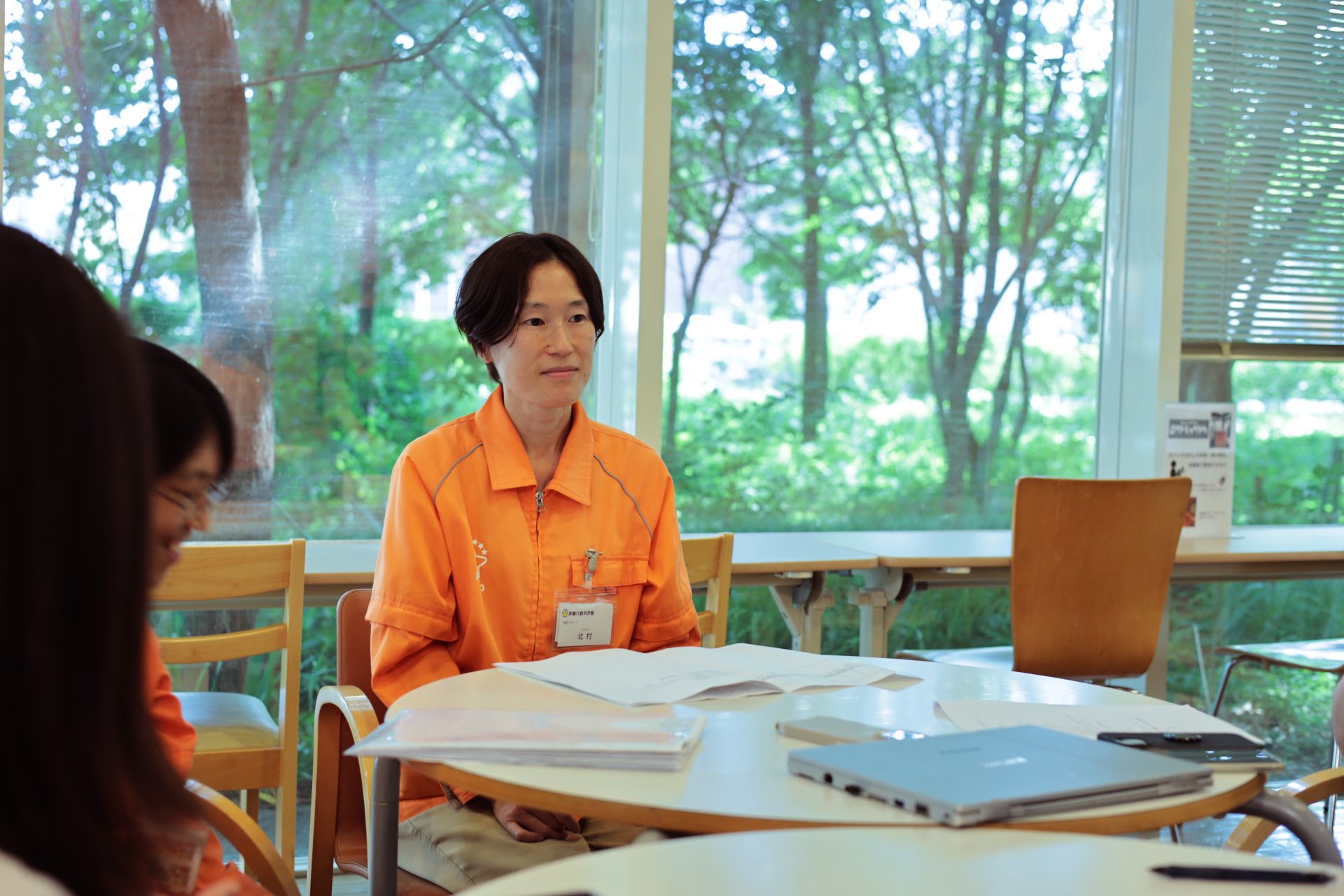
日野
特に来館の方々に見てほしい所はどこですか?
木下さん
須田先生が大きな箱にいろいろな種類の昆虫をランダムに並べている展示があるので、ぜひじっくりと見てほしいです。そこからたくさんの昆虫の種類を知ってほしいです。
得意分野が違うからこそ、相乗効果が生まれる
森
ところで今回の企画展は、どうしておふたりで組むことになったのですか? 展示や教育普及などを手掛ける自然グループの北村さんと、来館者と展示を仲介する“インタープリター*グループ”の木下さんが組んでいるのがおもしろいと感じました。
*「インタープリター」とは、もともとは通訳する人の意味。多摩六都科学館では、展示室で紹介している科学を、訪れた人に親しみやすく・わかりやすく伝える人として、展示室に立つスタッフをインタープリターと呼んでいます。
北村さん
自然チームの中で担当できるのが私しかいなくて、普段は魚をテーマにすることが多いのですが、今回は昆虫ということで。昆虫への苦手意識はなかったのですが、知識はあまりなかったので、専門的な知見を持たれている木下さんにアドバイザーとして入ってもらった形です。木下さんに「何がいいかな?」と相談しながらつくっていきました。

木下さん
私は普段、展示室にいる担当で、企画展は今回が初めてだったんです。こちらこそ、北村さんにいろいろ頼ってしまいました。標本もただ並んでいるだけだと「ふーん」となってしまうので、「ここが見どころだよ、他のものと見比べるポイントはここだよ」と伝えられるといいな、と考えていきました。
ロクトには“インタープリター”というグループがありまして、展示室のご案内、解説がメインの業務です。「対話型」と表現しています。他の施設ではこういうグループはあまりないので、ロクトならでは、ですね。
森
普段から体験・対話を大切にした展示やワークショップを実施している北村さんと、インタープリテーションでお客さんに「どうやって伝えたら分かりやすいか?興味を持ってもらえるか?」を日々考えている木下さん、おふたりの初のタッグだったということですね。
北村さん
部署は違いますが、どちらも専門は自然系です。インタープリターグループも「これってどういうことですか?」「この展示の調子が悪いみたい…」と思ったことを正直に言ってくれることが多く、館の事務室内ではみんながフラットにいろいろな話をしていて、垣根なくコミュニケーションが取れています。
森
「私はこれしかやらないよ」ではなくて、少しずつ皆がお互いに歩み寄って、新しい取り組みをしていこうとする姿勢が館全体で見られますよね。
手づくりだからこそ、伝えられること
森
ところでロクトでは、手づくりの展示が多いことも特徴的で、館の独自の魅力だと思っています。学芸員の皆さんは、普段どんな気持ちで向き合っているのですか?
北村さん
つくるのが得意なスタッフもたくさんいるので、特に2階にある「自然の部屋」は常設ではなく、スタッフが毎回テーマを考えてつくり替えているので、いいテーマがあれば自分たちで手づくりしていますね。
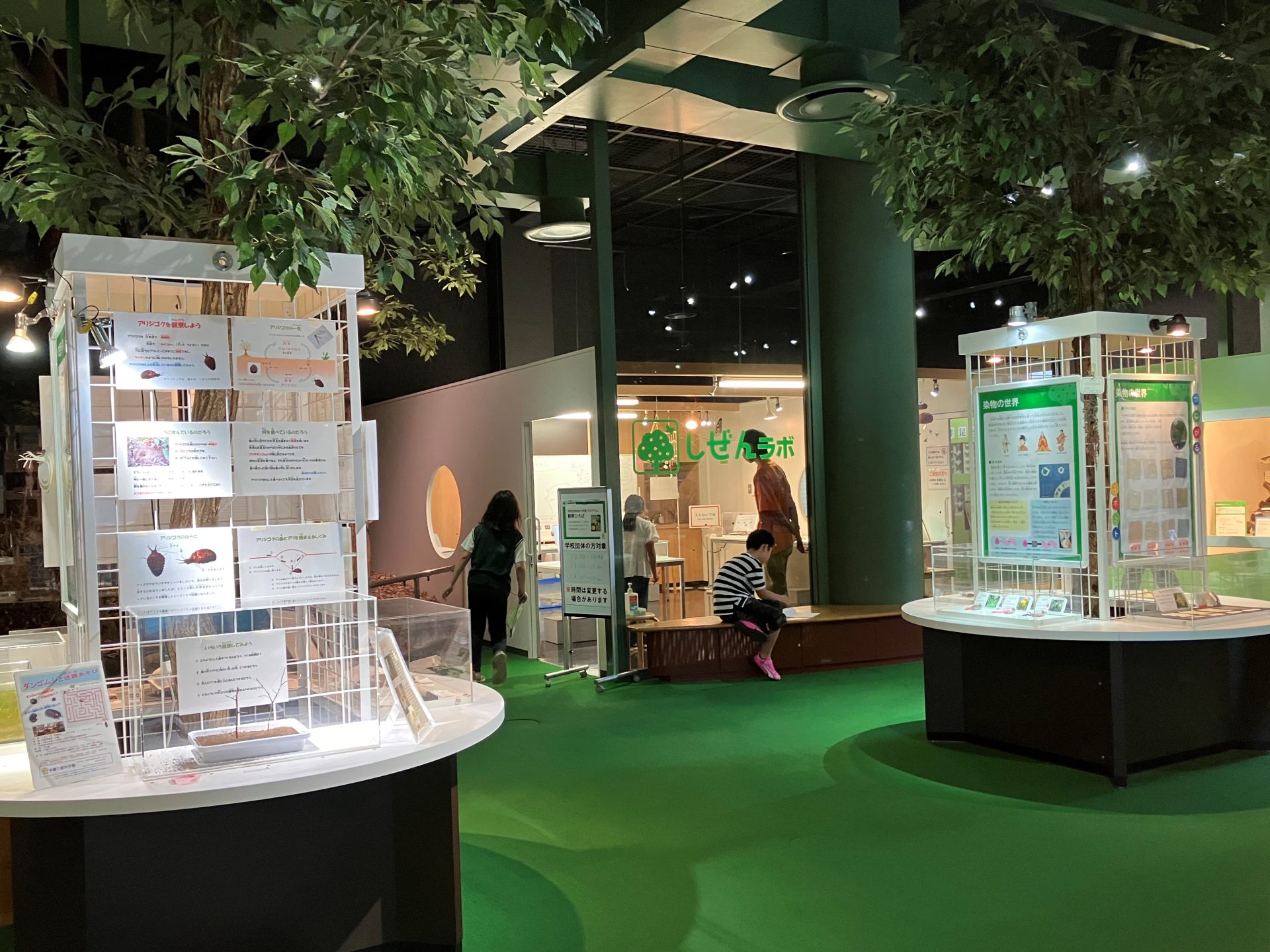
2階の「自然の部屋」内の「ツリー展示」は、スタッフが作製したパネルや展示物で地域の生き物や自然情報について紹介している
森
いつ来ても「自然の部屋」には新しい展示があって、常に更新されている様子が垣間見えています。そういった姿勢が今回の企画展にも表れているのかな、と思います。
北村さん
昨年の『魚の口展』を開催した際には、他のスタッフたちと魚の頭骨標本をちまちまとつくって展示しました。「自分たちでつくれるんだね」という気づきにもなりましたし、来館の皆さんの中にも「どうやってつくっているのだろう?」と興味を持ってくれる人が多くいました。“スタッフの手づくり”を展示したことによって、「夏休みの宿題でやってみたいな」と言ってくれる方が出てきたことが嬉しかったですね。
標本づくりのプロがいるわけではないので、失敗も繰り返していますが、「これくらいでいいのかな?」と迷いながらですけれど…本当に「スタッフがやってみました」という感覚ですね。
森
そういうチャレンジングな姿勢が、ロクトらしいなと思いました。
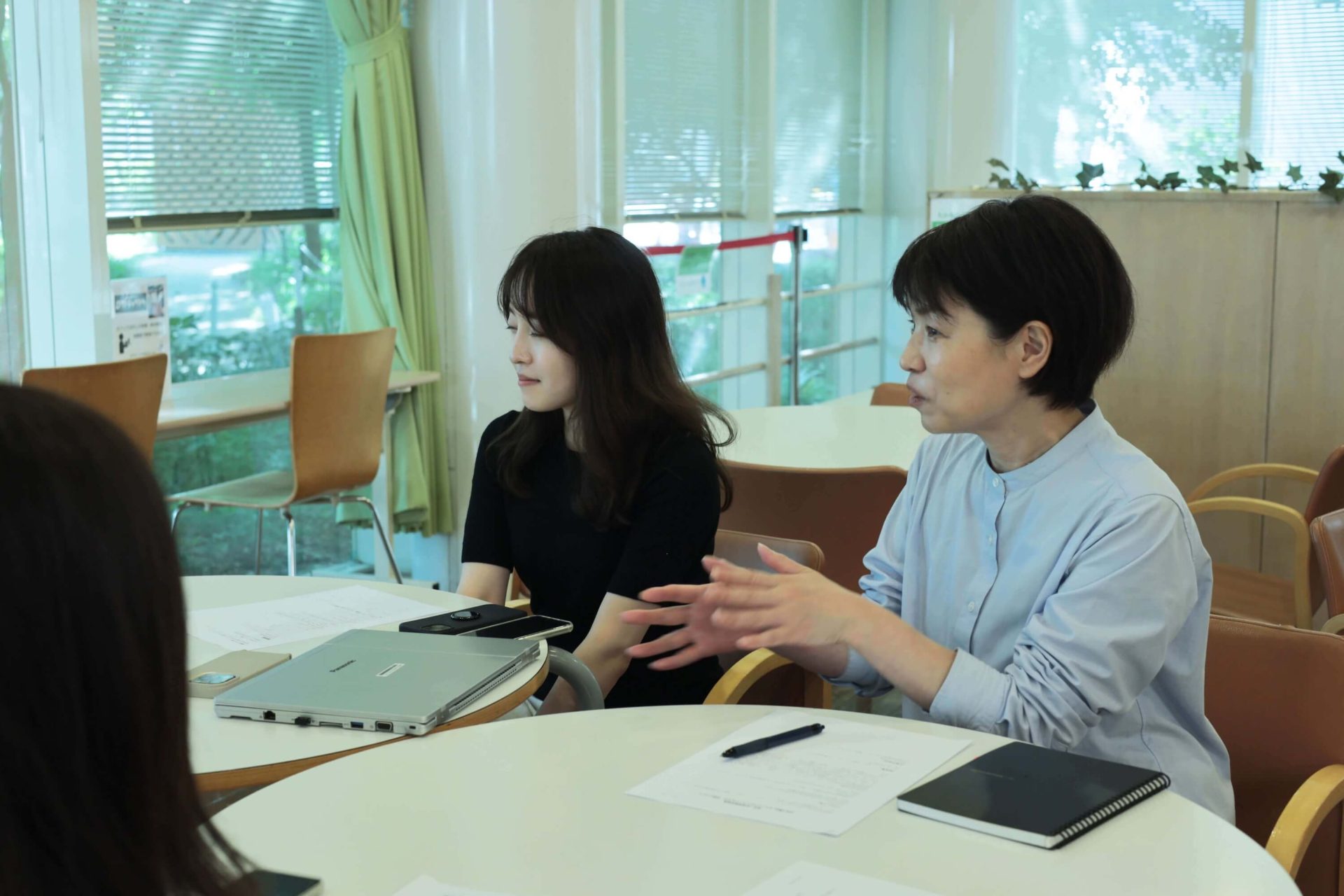
体験から生まれる気づき、伝えるために大切にしていること
日野
今日は小学生の団体さんが入られていて、とても楽しそうな様子を見て感じたのは、館全体に“体験できるもの”“触れるもの”が多いことでした。
北村さん
うちの館は「ハンズオンができる」というのがテーマになっています。ボタンを押す、ハンドルを回すなど、ちょっと体を動かすだけで何かアクションが起こるものが多いです。
木下さん
例えば、地下1階の「しくみラボ」では、今は逆さ振り子の工作をしていたり、空気の実験ができる装置を置いていたりしています。
森
しくみを伝える展示に比べて皆さんの専門分野である自然系は、来館の皆さんに気軽に体験してもらうのはなかなか難しいですよね。普段、展示の企画をする上で、来館者さんたちにぜひ体験してほしいと思っていることは何でしょう?
北村さん
生き物に触ることってなかなか難しいですよね。そういう意味では実際にフィールドに行って何がいるのか探してみることが大切だと思っています。例えば自分で獲った魚をすくって瓶に移すだけでヌルッとした触感が分かったり、ガサガサした表面に触れて感じたり…と、やっぱりフィールドに出ての触れ合いが重要になると思います。
森
それはとても大切な視点ですね。ただ現実には、なかなか実際のフィールドに行ける機会は少ないと思います。生き物に触れる体験の大切さを展示でどのように表現されていますか?
北村さん
やっぱり標本が活躍すると思います。例えば魚の展示であれば、エラのカタチが分かるように展示したり、消化器官=胃がある魚とない魚の見比べられるようにしたり、神経衰弱のように魚の分類の仲間を当ててもらうゲームをやったり、魚の回遊をテーマにすごろくで遊んでもらったり…と、体験につなげる展示を心がけています。
森
なるほど、効果的な手法ですね。ちなみに虫が苦手な子供たちも多いかと思います。そういった子供たちに向けて意識していることはありますか?
木下さん
本当に嫌ではなければ、見てみたらキレイだなって思ってもらえると思うのですよね。例えば今回の展示では、標本は30に留まらずたくさんの種類を展示しますので、ぜひいろいろな視点で見てみて欲しいです。
青木
確かに私は正直、虫が苦手な方ですが、さっきご説明いただいたナナフシの仕組みにとても興味が湧いて、奥深いと思いました。見かけから入ったとしても、その仕組みを聞くことで納得して…と、学びになることが大切なのですね。

“好き”から生まれる企画、より良い循環のカタチ
日野
学芸員の皆さんが企画をつくるときの軸は、どんなものでしょうか?例えば「子供たちの夏休みの自由研究になりそう」といった視点で考えていかれるのですか?
木下さん
「自分がこれを見せたい」という想いで、みんなでアイデアを出していくことが多いです。スタッフの“好き”が軸になっている印象がありますね。
日野
学芸員の皆さんによる提案で、虫が食べた葉っぱを作品のように額に入れて販売しているとか…本当ですか?
木下さん
そうなんです、ミュージアムショップで売っていますので、ぜひ見てみてください。
北村さん
私も好きなものばかりやってしまいます。例えば魚の口は、食べるものによって違います。プランクトンを吸い込む、丸かじりで食べる、藻を食べる…と食べるモノによって、魚の歯のカタチや口のカタチが違うんだ、という着眼点で見てもらえると「何を食べているのかな?」といろいろな想像が膨らむのではないかと思っています。館のみんなも同じように取り組んでいるのではないでしょうか。

森
実際に子供たちが見て反応してくれるのって嬉しいですよね。来館者の皆さんの反応で嬉しかったもの、ショックだったものはありますか?
北村さん
先ほどお話した魚の口をテーマにした展示で、魚の標本に対して「こんなのつくれるんだね」と言ってもらえたのが嬉しかったです。私たちが「面白い!」と思った魚を買ってきて、試行錯誤しながら標本をつくってみたので、反応があってとても嬉しかったです。
逆に「魚はどうやってプランクトンを飲み込んでいるの?」という質問に対して説明に困ってしまったので、もっと分かりやすくできたのではないか、顕微鏡などの装置を使うことでもっと見やすくできたのではないか、と反省点もありました。こういった振り返りは企画展だけでなく、日常的に運営しているラボの中でも還元していけるので、企画展での気づきを活かしていけると思います。
森
企画展と常設展がうまくつながっているところが、またロクトのいいところですよね。自分たちですべてやっていて、お客さんの反応があって、それを活かしたアップデートがあって…と、とても良い循環が生まれていると思いました。
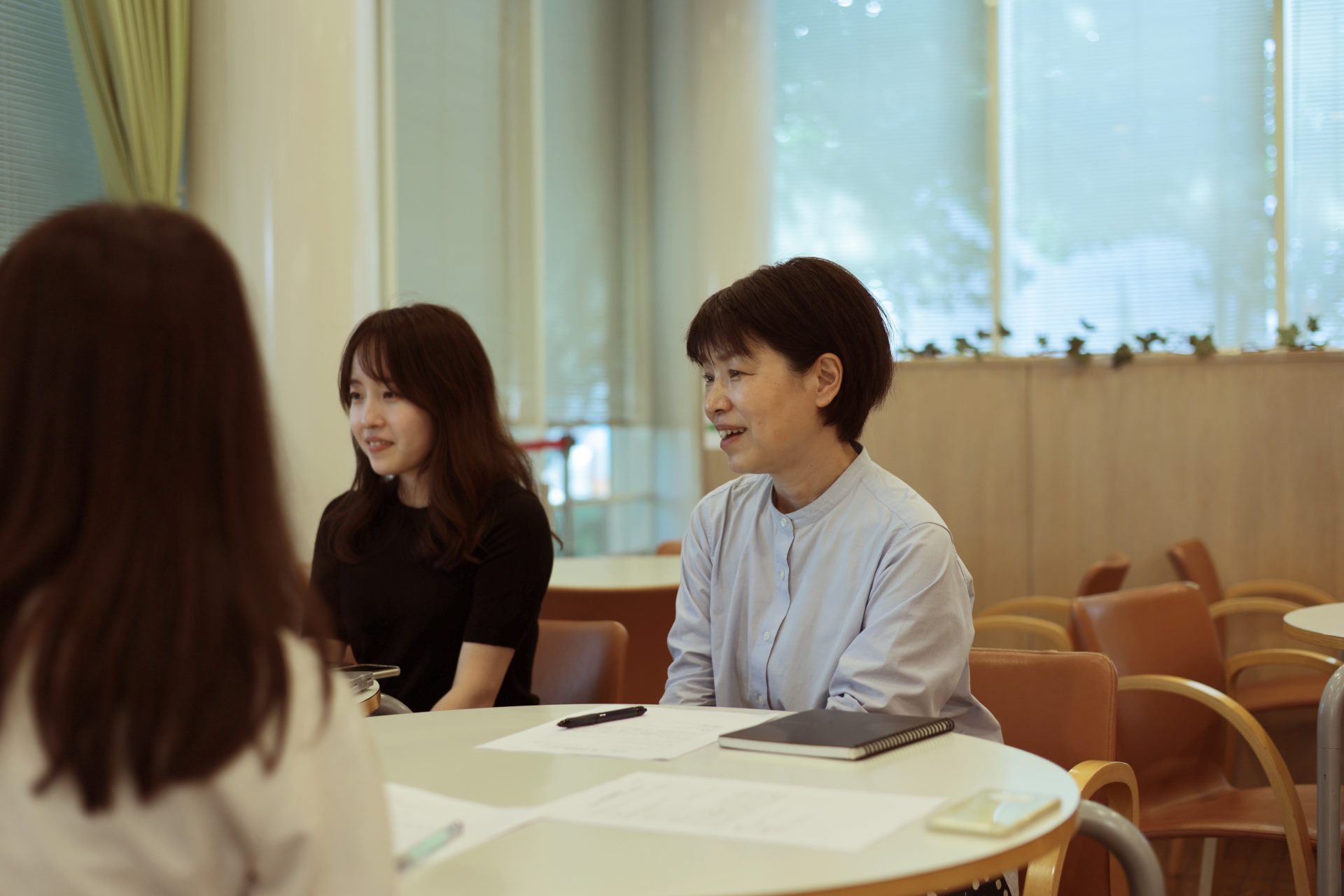
7月20日開催の企画展に向けて
森
いよいよ7月の開催ですが、参加型イベントの募集も始まっていますよね。今回オススメのイベントはありますか?
木下さん
ペットボトルアーティストさんとつくる蝶とカマキリですね。昆虫調査も今回たまたま30回目なのですが、子供たちを交えて調査の方法をレクチャーするのは初めてなので、とても楽しみです。見つけ方のポイント、レポートのまとめ方をお伝えする予定です。
森
それは良い夏休みの自由研究になりそうですね。子供たちの主体性を引き出そうとされている姿勢がとても良いですね。
北村さん
館で発行している『ロクトニュース』というチラシがありまして、ぜひご家庭でもチェックいただいて「これが夏休みの自由研究に良さそう!」など、想像や会話を膨らませていただけると嬉しいです。そこから、どんどん興味が派生していくといいな、と思っています。
*ロクトニュース No.130(7・8月号) に今回の企画展の情報を掲載https://www.tamarokuto.or.jp/archive/
森
今回の企画展では、オリジナルグッズもつくりますか?
木下さん
ミュージアムショップだけでなく、エントランスのサテライトショップに昆虫をテーマとしたグッズ販売がありますので、楽しみにしていて下さい。
森
それでは、7月20日からの開催を楽しみにしています。本日はありがとうございました。
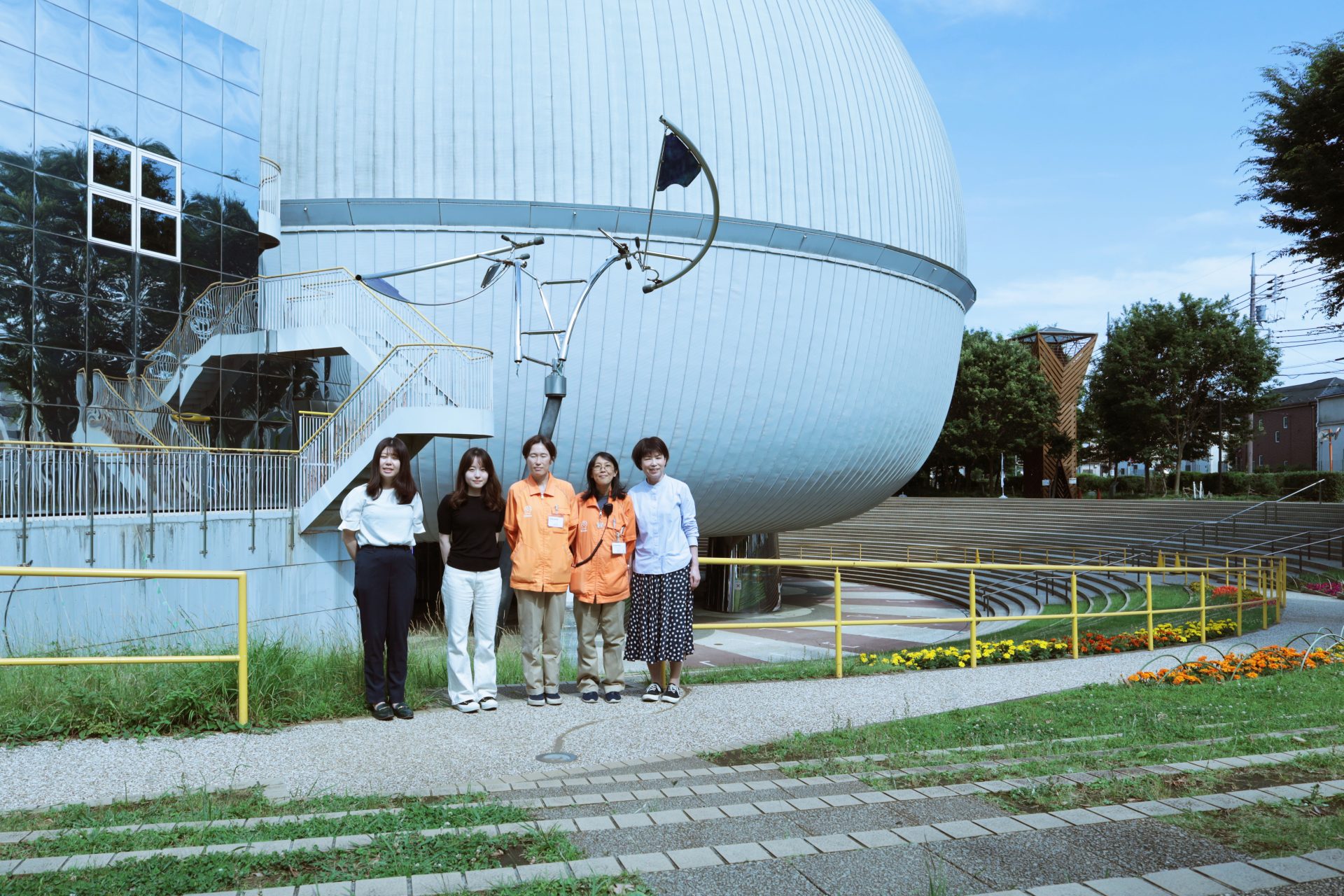
来館する子供たちへ 学芸員のおふたりからメッセージ
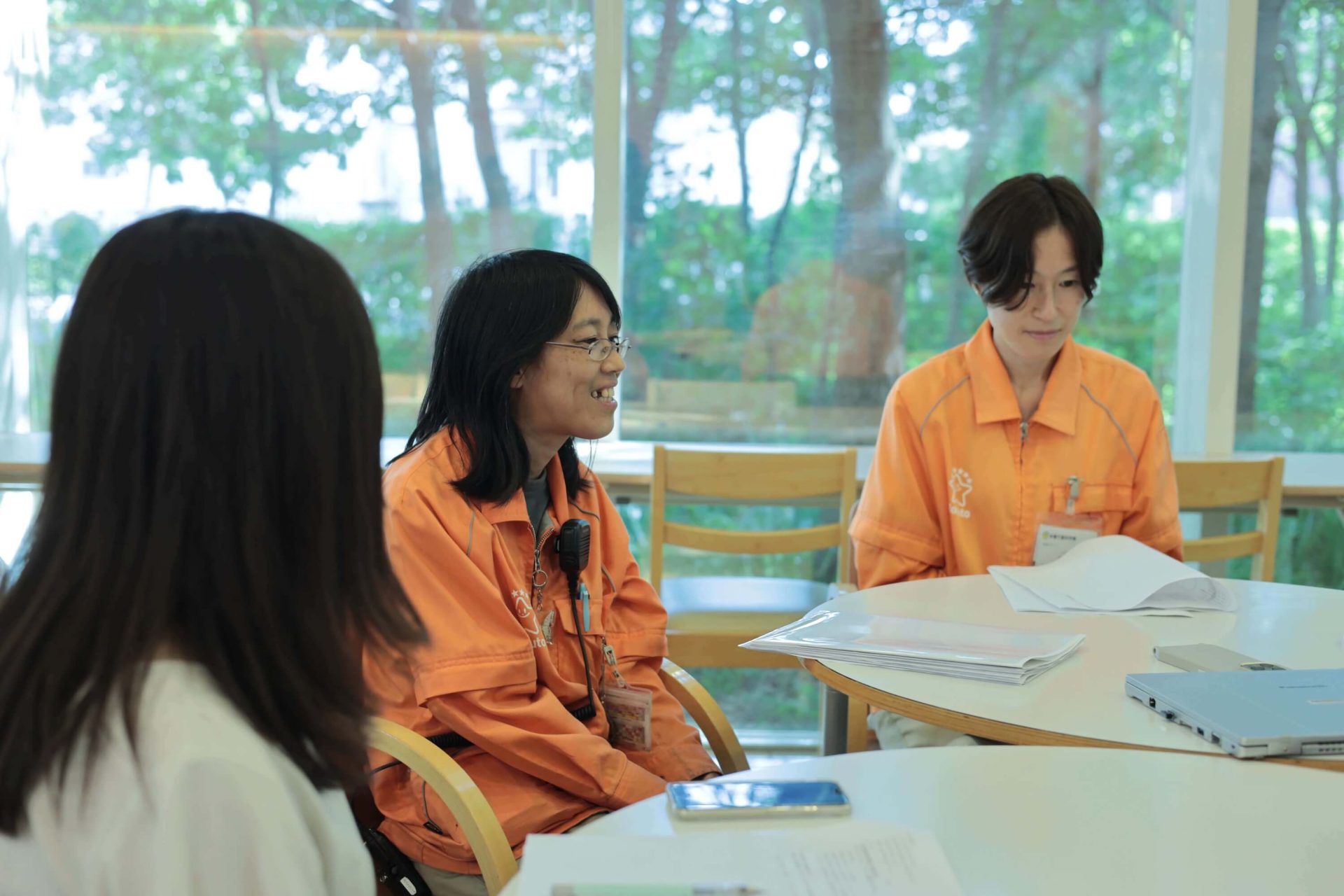
北村さん
今回たくさんの昆虫を見られる機会になりますので、標本をじっくり見ていただいて、ぜひ木下さんが企画した「昆虫調査」にも参加してもらいたいです。そしてどこかで昆虫を見た時に、「あ、どこかでこんなもの見たな」「こんなこと書いてあったな」と思い出してもらえるきっかけになると嬉しいです。そして「昆虫好きになってくれたらいいな」という想いです。
木下さん
今回、日本だけでなく世界の珍しい昆虫も並んでいるので、「昆虫って、こんなにいろいろな種類がいるんだな」「こんなに面白いカタチ・キレイなカタチがあるんだな」といった入口から、少しでも昆虫に興味を持ってもらえたら嬉しいです。
【7/22更新】
『開館30周年夏の特別企画展 ロクト昆虫図鑑』オープンしました!





 ]
]


展覧会概要
開催期間:2024年7月20日(土)~9月1日(日)9:30~17:00
※7/22(月)、29(月)、8/5(月)、19(月)、26(月)は休館
会場:多摩六都科学館 イベントホール(会場面積 128.3㎡)
入場料:無料(入館料は別途必要)
ホームページ:https://www.tamarokuto.or.jp/
*掲載情報は公開日当時のものです。
この記事は気に入りましたか?
